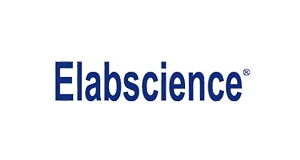Recombinant Human CCL13 Protein(Trx Tag)
Recombinant Human CCL13 Protein(Trx Tag)
Artikelnummer
ELSPDEH100512-100
Verpackungseinheit
100μg
Hersteller
Elabscience Biotechnology
Verfügbarkeit:
wird geladen...
Preis wird geladen...
Protein Tag: N-Trx
Uniprot: Q99616
Accession: Q99616
Background: Monocyte Chemoattractant Proteins 4 (MCP-4/CCL13) is a member of a distinct, structurally-related subclass of CC chemokines mainly involved in recruitment of eosinphils to inflammatory sites. CCL13/MCP-4, is a CC family chemokine that is chemoattractant for eosinophils, basophils, monocytes, macrophages, immature dendritic cells, and T cells, and its capable of inducing crucial immuno-modulatory responses through its effects on epithelial, muscular and endothelial cells. Similar to other CC chemokines, CCL13 binds to several chemokine receptors (CCR1, CCR2 and CCR3), allowing it to elicit different effects on its target cells. A number of studies have shown that CCL13 is involved in many chronic inflammatory diseases, in which it functions as a pivotal molecule involved in the selective recruitment of cell lineages to the inflamed tissues and their subsequent activation. MCP-4/CCL13 is secreted from chondrocytes and activates the proliferation of rheumatoid synovial cells, thereby leading to joint destruction in RA. The interferon-gamma in combination with interleukin-1beta/tumor necrosis factor-alpha activates the production of MCP-4/CCL13 from chondrocytes in RA joints, and that secreted MCP-4/CCL13 enhances fibroblast-like synoviocyte proliferation by activating the extracellular signal-regulated kinase mitogen-activated protein kinase cascade. CCL13 may have some role in the pathogenesis of systemic sclerosis (SSc).
Bio Acitivity: Not validated for activity
Sequence: Gln24-Thr98
Purity: > 80% as determined by reducing SDS-PAGE.
Formulation: Lyophilized from a 0.2 μm filtered solution in PBS with 5% Trehalose and 5% Mannitol.
Reconstitution: It is recommended that sterile water be added to the vial to prepare a stock solution of 0.5 mg/mL. Concentration is measured by UV-Vis
Endotoxin: < 10 EU/mg of the protein as determined by the LAL method
Calculated MW: 28.3 kDa
Observed MW: 31 kDa
Uniprot: Q99616
Accession: Q99616
Background: Monocyte Chemoattractant Proteins 4 (MCP-4/CCL13) is a member of a distinct, structurally-related subclass of CC chemokines mainly involved in recruitment of eosinphils to inflammatory sites. CCL13/MCP-4, is a CC family chemokine that is chemoattractant for eosinophils, basophils, monocytes, macrophages, immature dendritic cells, and T cells, and its capable of inducing crucial immuno-modulatory responses through its effects on epithelial, muscular and endothelial cells. Similar to other CC chemokines, CCL13 binds to several chemokine receptors (CCR1, CCR2 and CCR3), allowing it to elicit different effects on its target cells. A number of studies have shown that CCL13 is involved in many chronic inflammatory diseases, in which it functions as a pivotal molecule involved in the selective recruitment of cell lineages to the inflamed tissues and their subsequent activation. MCP-4/CCL13 is secreted from chondrocytes and activates the proliferation of rheumatoid synovial cells, thereby leading to joint destruction in RA. The interferon-gamma in combination with interleukin-1beta/tumor necrosis factor-alpha activates the production of MCP-4/CCL13 from chondrocytes in RA joints, and that secreted MCP-4/CCL13 enhances fibroblast-like synoviocyte proliferation by activating the extracellular signal-regulated kinase mitogen-activated protein kinase cascade. CCL13 may have some role in the pathogenesis of systemic sclerosis (SSc).
Bio Acitivity: Not validated for activity
Sequence: Gln24-Thr98
Purity: > 80% as determined by reducing SDS-PAGE.
Formulation: Lyophilized from a 0.2 μm filtered solution in PBS with 5% Trehalose and 5% Mannitol.
Reconstitution: It is recommended that sterile water be added to the vial to prepare a stock solution of 0.5 mg/mL. Concentration is measured by UV-Vis
Endotoxin: < 10 EU/mg of the protein as determined by the LAL method
Calculated MW: 28.3 kDa
Observed MW: 31 kDa
| Artikelnummer | ELSPDEH100512-100 |
|---|---|
| Hersteller | Elabscience Biotechnology |
| Hersteller Artikelnummer | PDEH100512-100 |
| Verpackungseinheit | 100μg |
| Mengeneinheit | STK |
| Reaktivität | Human |
| Wirt | Escherichia Coli |
| Produktinformation (PDF) |
|
| MSDS (PDF) |
|

 English
English










